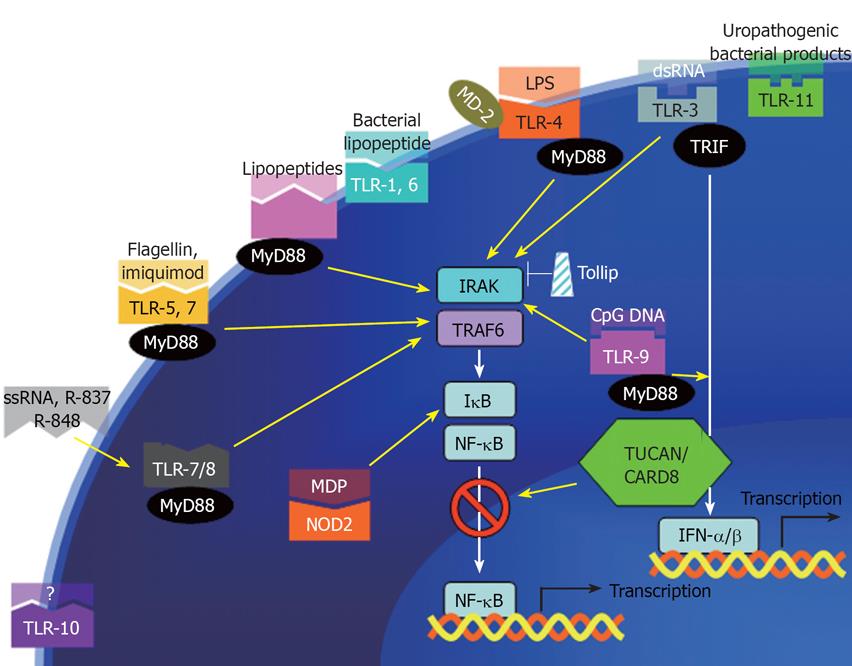Copyright
©2008 The WJG Press and Baishideng.
World J Gastroenterol. Jan 21, 2008; 14(3): 390-400
Published online Jan 21, 2008. doi: 10.3748/wjg.14.390
Published online Jan 21, 2008. doi: 10.3748/wjg.14.390
Figure 2 PRRs and their corresponding ligands.
Toll-like receptors on the cell membrane (TLR-1, -6, -10, and -11) and intracellular (TLR-7, -8, and -9) selectively bind to various bacterial, viral, or fungal components. A major convergent pathway is through myeloid differentiation primary response protein MyD88, which activates NF-κB. The death domain of MyD88 then recruits downstream IL-1 receptor-associated kinase (IRAK) to the receptor complex. IRAK is then autophosphorylated and in turn recruits TNF receptor-associated factor 6 (TRAF6). TRAF6 then activates kinases including NF-κB-inducing kinase (NIK) and mitogen-activated protein kinase/ERK kinase kinase 1 (MEKK1). Inhibitor of NF-κB degradation (IκB) is subsequently phosphorylated and degraded, resulting in NF-κB nuclear translocation. NF-κB then activate genes involved in inflammatory response including IL-1b, TNF, IL-6, IL-8, and ICAM1. Toll-inhibitory protein (Tollip) is one of the negative regulators of the innate immunity. Activation of typeI IFN (IFN-α/β) also has anti-inflammatory function in colitis.
- Citation: Shih DQ, Targan SR. Immunopathogenesis of inflammatory bowel disease. World J Gastroenterol 2008; 14(3): 390-400
- URL: https://www.wjgnet.com/1007-9327/full/v14/i3/390.htm
- DOI: https://dx.doi.org/10.3748/wjg.14.390









